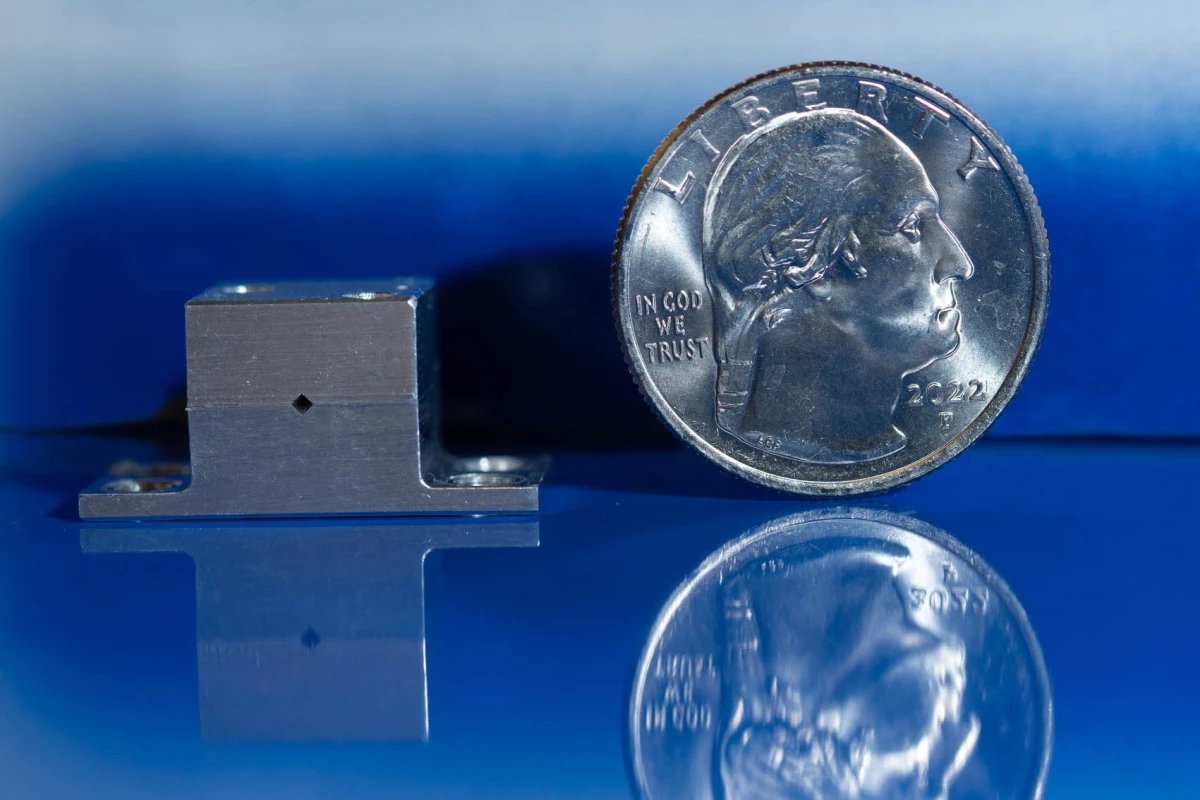Engineers at NASA’s Goddard Space Flight Center have developed a tiny but powerful laser that could one day help astronauts find water on the Moon. Smaller than a US quarter, the laser makes use of quantum mechanical effects to produce a beam in the terahertz (THz) range, which can highlight hidden water.
For over a decade we’ve known for sure that there’s water on the Moon, thanks to missions like Chandrayaan-1. This orbiter imaged the lunar surface with a spectrometer that measured the reflection and absorption of different wavelengths of light, which can reveal the composition of the material present, including water molecules.
As useful as these instruments were, they didn't have the sensitivity to differentiate between water and similar forms like free hydrogen ions and hydroxyl. More precise instruments called heterodyne spectrometers focus on tighter frequency ranges, by combining the incoming light with that from a laser in the device, then measuring the difference between the two light sources.
The Goddard engineers designed one of these devices that could tune in to the THz frequencies of water. Existing oscillators and lasers that generate THz waves are bulky, heavy and energy-hungry systems, but they managed to shrink their design down to the size of a coin. To do so, the team tapped into some strange quantum quirks.

The team’s device is what’s known as a quantum cascade laser, which is made up of a series of ultra-thin layers of semiconductor materials. Emitted photons enter this gauntlet of barriers – and because the layers are so thin, there’s an increased chance that the photons will simply ignore the barriers and appear on the other side, in a phenomenon called quantum tunneling.
When a photon reaches the other side, it excites other photons, so by the time they pass through the 80 to 100 layers stacked in the device, the end result is a cascade of photons with energy on the THz scale. A waveguide and thin optical antenna keep the beam focused for longer.
The team says that even with its power supply, processor and spectrometer hardware, the whole system could fit into a device the size of a teapot. That means it’s in the realm of possibility that future astronauts could use a handheld version to dowse for water on the Moon, Mars or other bodies.
While there’s still work to be done, the researchers plan to build a flight-ready version for NASA’s upcoming Artemis program, which will see humans return to the Moon by 2024.
Source: NASA





